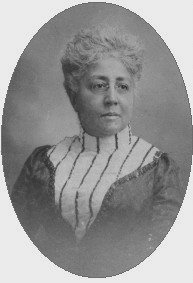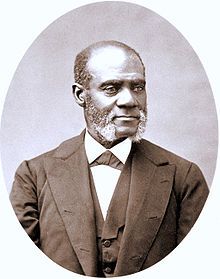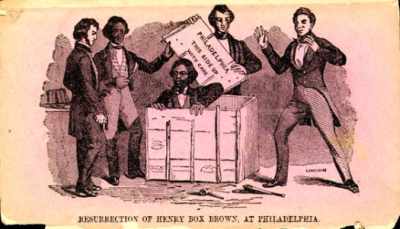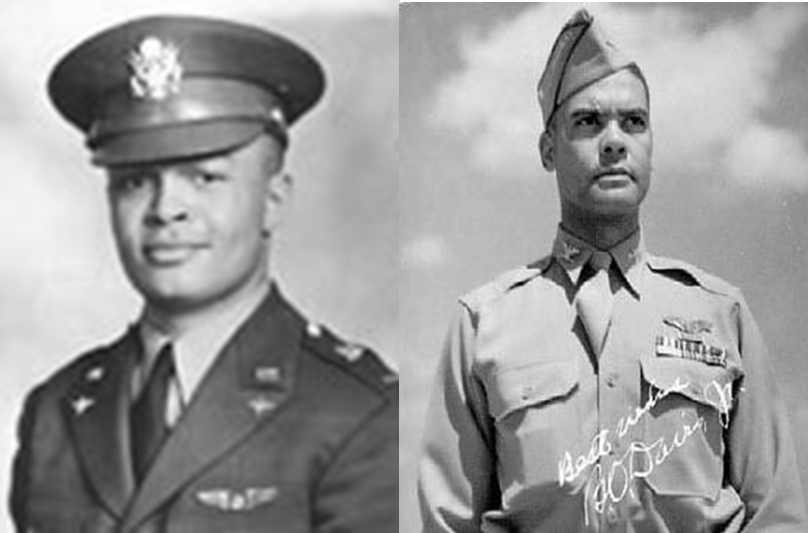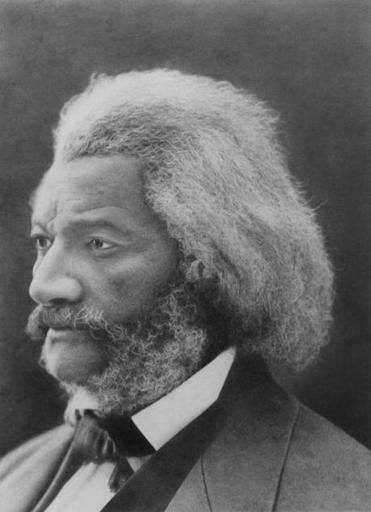GM – FBF – Today’s story is about the first enslaved African
American to file and win a freedom suit in Massachusetts. The Massachusetts
Supreme Judicial Court ruling, in her favor, found slavery to be inconsistent
with the 1780 Massachusetts State Constitution. Her suit, Brom and Bett v.
Ashley (1781), was cited in the Massachusetts Supreme Judicial Court appellate
review of Quock Walker’s freedom suit. When the court upheld her freedom under
the state’s constitution, the ruling was considered to have implicitly ended
slavery in Massachusetts. She also was the step-great-great-grandmother of the
great W. E. B. Du Bois. Enjoy!
Remember – “Any time, any time while I was a slave, if one
minute’s freedom had been offered to me, and I had been told I must die at the
end of that minute, I would have taken it—just to stand one minute on God’s
airth [sic] a free woman— I would.” — Elizabeth Freeman
Today in our History – December 28, 1829 – Elizabeth “MumBet”
Freeman dies.
Freeman was illiterate and left no written records of her life.
Her early history has been pieced together from the writings of contemporaries
to whom she told her story or who heard it indirectly, as well as from
historical records.
Freeman was born into slavery around 1744 at the farm of Pieter
Hogeboom in Claverack, New York, where she was given the name Bet. When
Hogeboom’s daughter Hannah married John Ashley of Sheffield, Massachusetts,
Hogeboom gave Bet, around seven years old, to Hannah and her husband. Freeman
remained with them until 1781, during which time she had a child, Little Bet.
She is said to have married, though no marriage record has been located. Her
husband (name unknown) is said to have never returned from service in the
American Revolutionary War.
Throughout her life, Bet exhibited a strong spirit and sense of
self. She came into conflict with Hannah Ashley, who was raised in the strict
Dutch culture of the New York colony. In 1780, Bet prevented Hannah from
striking a servant girl with a heated shovel; Elizabeth shielded the girl and
received a deep wound in her arm. As the wound healed, Bet left it uncovered as
evidence of her harsh treatment. John Ashley was a Yale-educated lawyer,
wealthy landowner, businessman and leader in the community. His house was the
site of many political discussions and the probable location of the signing of
the Sheffield Resolves, which predated the Declaration of Independence.
In 1780, Freeman heard the newly ratified Massachusetts
Constitution read at a public gathering in Sheffield, including the following:
All men are born free and equal, and have certain natural,
essential, and unalienable rights; among which may be reckoned the right of
enjoying and defending their lives and liberties; that of acquiring,
possessing, and protecting property; in fine, that of seeking and obtaining
their safety and happiness. — Massachusetts Constitution, Article 1.
Inspired by these words, Bett sought the counsel of Theodore
Sedgwick, a young abolition-minded lawyer, to help her sue for freedom in
court. According to Catherine Sedgwick’s account, she told him, “I heard
that paper read yesterday, that says, all men are created equal, and that every
man has a right to freedom. I’m not a dumb critter; won’t the law give me my
freedom?” After much deliberation Sedgwick accepted her case, as well as
that of Brom, another of Ashley’s slaves. He enlisted the aid of Tapping Reeve,
the founder of Litchfield Law School, one of America’s earliest law schools,
located in Litchfield, Connecticut. They were two of the top lawyers in
Massachusetts, and Sedgwick later served as US Senator. Arthur Zilversmit
suggests the attorneys may have selected these plaintiffs to test the status of
slavery under the new state constitution.
The case of Brom and Bett v. Ashley was heard in August 1781
before the County Court of Common Pleas in Great Barrington. Sedgwick and Reeve
asserted that the constitutional provision that “all men are born free and
equal” effectively abolished slavery in the state. When the jury ruled in
Bett’s favor, she became the first African-American woman to be set free under
the Massachusetts state constitution.
The jury found that “…Brom & Bett are not, nor were they at the time
of the purchase of the original writ the legal Negro of the said John
Ashley…” The court assessed damages of thirty shillings and awarded both
plaintiffs compensation for their labor. Ashley initially appealed the
decision, but a month later dropped his appeal, apparently having decided the
court’s ruling on constitutionality of slavery was “final and
binding.”
After the ruling, Bett took the name Elizabeth Freeman. Although
Ashley asked her to return to his house and work for wages, she chose to work
in attorney Sedgwick’s household. She worked for his family until 1808 as
senior servant and governess to the Sedgwick children, who called her
“Mumbet.” The Sedgwick children included Catharine Sedgwick, who
became a well-known author and wrote an account of her governess’s life. Also
working at the Sedgwick household during much of this time was Agrippa Hull, a
free black man who had served with rebel forces for years during the
Revolutionary War.
From the time Freeman gained her freedom, she became widely
recognized and in demand for her skills as a healer, midwife and nurse. After
the Sedgwick children were grown, Freeman moved into her own house on Cherry
Hill in Stockbridge near her daughter, grandchildren and great grandchildren.
Freeman’s real age was never known, but an estimate on her
tombstone puts her age at about 85. She died on December 28,1829 and was buried
in the Sedgwick family plot in Stockbridge, Massachusetts. Freeman remains the
only non-Sedgwick buried in the Sedgwick plot. They provided a tombstone,
inscribed as follows:
ELIZABETH FREEMAN, also known by the name of MUMBET died Dec. 28th 1829. Her
supposed age was 85 Years. She was born a slave and remained a slave for nearly
thirty years; She could neither read nor write, yet in her own sphere she had
no superior or equal. She neither wasted time nor property. She never violated
a trust, nor failed to perform a duty. In every situation of domestic trial,
she was the most efficient helper and the tenderest friend. Good mother,
farewell.
The decision in the case of Elizabeth Freeman was cited as
precedent when the Massachusetts Supreme Judicial Court heard the appeal of
Quock Walker v. Jennison later that year and upheld Walker’s freedom. These
cases set the legal precedents that ended slavery in Massachusetts. Vermont had
already abolished it explicitly in its constitution.
Civil Rights leader and historian W. E. B. Du Bois claimed
Freeman as his relative and wrote that she married his maternal
great-grandfather, “Jack” Burghardt. But, Freeman was 20 years senior
to Burghardt, and no record of such a marriage has been found. It may have been
Freeman’s daughter, Betsy Humphrey, who married Burghardt after her first
husband, Jonah Humphrey, left the area “around 1811”, and after
Burghardt’s first wife died (c. 1810). If so, Freeman would have been Du Bois’s
step-great-great-grandmother. Anecdotal evidence supports Humphrey’s marrying
Burghardt; a close relationship of some form is likely.
Season 1, episode 37 of the
television show Liberty’s Kids, titled “Born Free and Equal”, is
about her. It was first aired in 2003, and in it she is voiced by Yolanda King.
Research more about the struggle of Black’s and the courts and share with your
babies. Make it a champion day!




